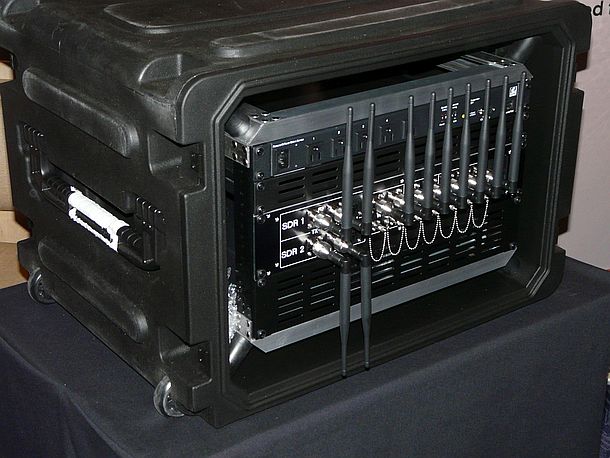Patrick Durant | Sydney
A new counter-Unmanned Aerial System (C-UAS) capability set to enter the market early next year is being demonstrated across Australia, and will appear as part of the Counter Non-Traditional Threats (Counter NTT) Conference in Canberra from 10-11 November.
Australian protective equipment supplier EPE has teamed up with ASX listed US company Department 13. They conducted the first demonstration of the capability in Sydney this week for ADM and potential stakeholders, which included police and Defence personnel. The technology was also demonstrated at Army’s recent Innovation Day.
A Parrot AR Drone quadcopter, one of the most popular commercially available drones on the market, was mitigated by Mesmer seizing throttle control and reducing power.
"When the drone is talking, we’re able to listen in on whatever language it is speaking."
Mesmer is one of the only C-UAS technologies that focuses on protocol manipulation to mitigate the threat.
Department 13 CEO Jonathan Hunter said the technique uses signal features and metadata to select and apply strategies including “taking control” of the UAS, flying it, and landing it safely in a location of choice.
“What many of our competitors are doing is what’s called “de-auth” – denying or de-authorising the drone off the network, but still allowing the operator to retain control – that’s not protocol manipulation and is relatively simple to do."
The physical system consists of a 41 kilogram stand-alone, rack mountable unit. It's essentially a server with an RF front end to control the gain and transmission of the RF signals.
 The physical system consists of a 41 kilogram stand-alone, rack mountable unit. Credit: ADM (Patrick Durrant)
The physical system consists of a 41 kilogram stand-alone, rack mountable unit. Credit: ADM (Patrick Durrant)
Hunter said it had an effective range of at least one kilometre using only one watt of transmit power, and range was a variable depending on the antenna type, transmit power and terrain.
Department 13 technical lead Brian Halfpap explained the antennas for the software defined radio which sample the airwaves, alternating between multiple frequencies as the system searches for drones. The signals are then de-modulated in the computer, allowing the detected drone “packet” to drop out. This packet is analysed in order to determine whether it is emanating from a drone. The detection is then populated in the system and a decision can be made whether to mitigate the threat or simply monitor.
“When the drone is talking, we’re able to listen in on whatever language it is speaking, from there we can take a part in the conversation and tell it that we’re taking control,” Halfpap said.
In September, the company successfully demonstrated Mesmer at Black Dart, a US Department of Defense C-UAS evaluation exercise.
“We’re very excited to be bringing the system to market in January, and we have a high level of interest from international and government agencies from around the world,” Hunter said.
EPE managing director Warwick Penrose said defence personnel from Canada, the US, NZ and the UK would also be attending the planned demonstrations in a nation wide series this month.
“It’s nice to be on the front foot here in Australia and be one step ahead of some of those coalition partners in this type of technology.”



